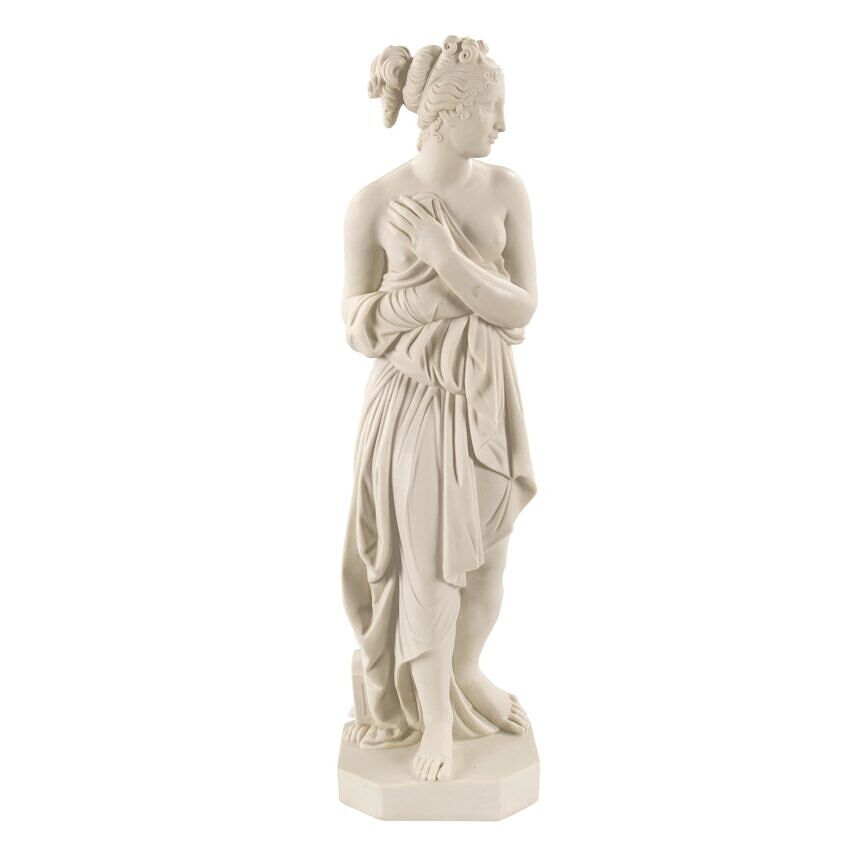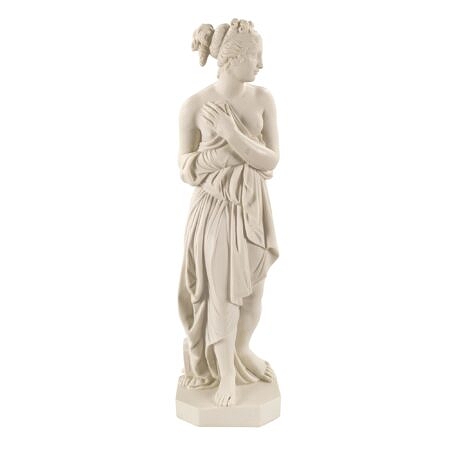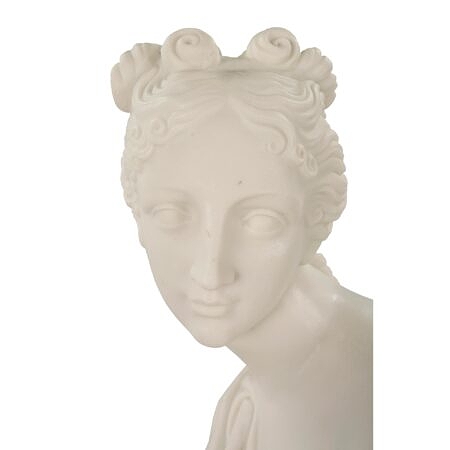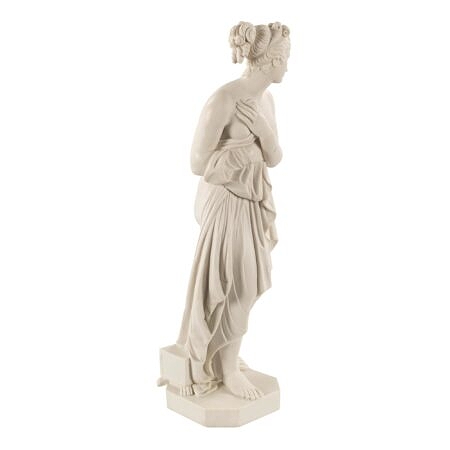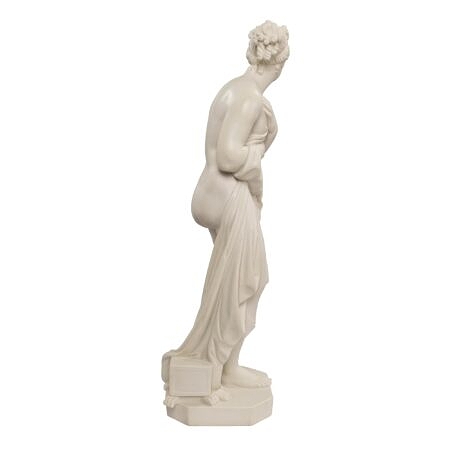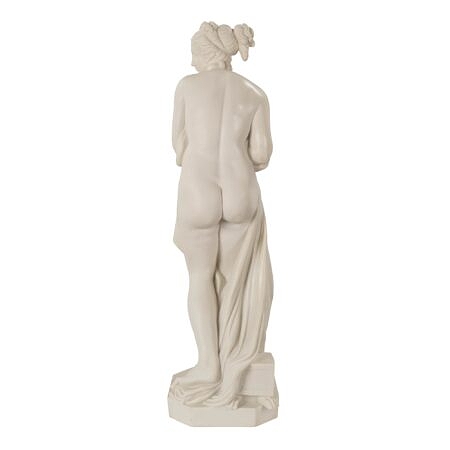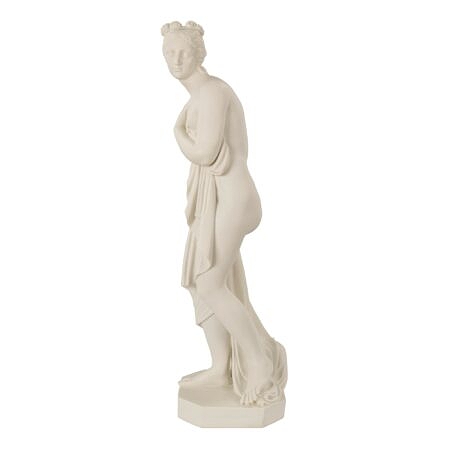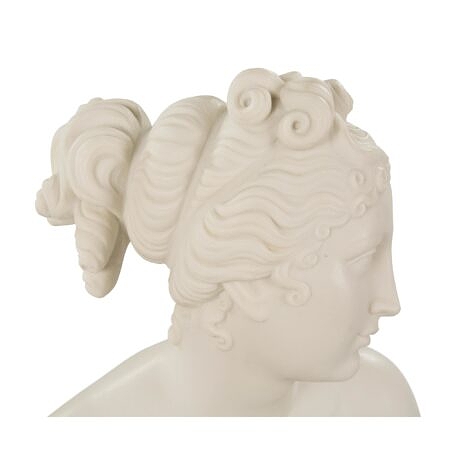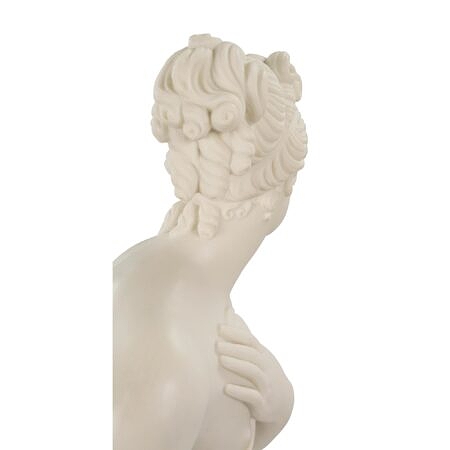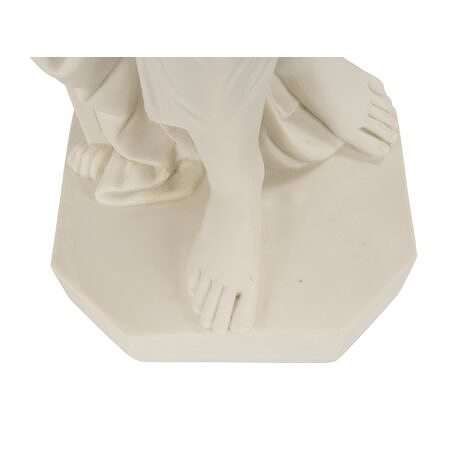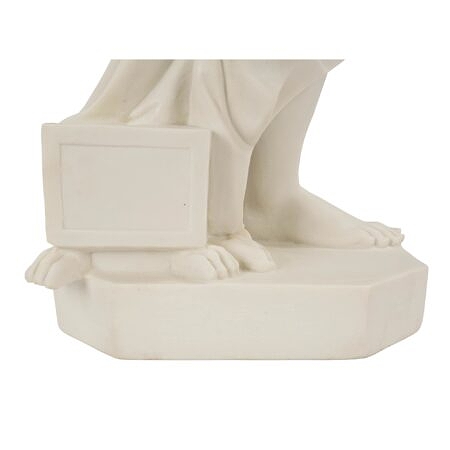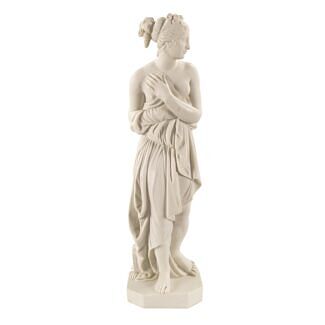An Italian 19th century Neo-Classical st. statue of Venus
List: $5,500.00
A beautiful Italian 19th century Neo-Classical st. Biscuit de Sèvres statue of Venus. The masterfully sculpted statue is raised by a square base with cut corners. Venus stands with a a finely carved box with paw supports at her feet.... — Read More
A beautiful Italian 19th century Neo-Classical st. Biscuit de Sèvres statue of Venus. The masterfully sculpted statue is raised by a square base with cut corners. Venus stands with a a finely carved box with paw supports at her feet. She is draped in a wonderfully executed flowing fabric which partially covers her. Her hair is tied in an elegant updo. Wonderful expression and details throughout. — Read Less
- Item # 9797
-
H: 31.75 in D: 9 in
H: 81 cm D: 23 cm
- Italy
- 19th Century
- Neo-Classical st. Read More
- Sèvres Read More
(Neo-Classical st.) -
One of the top design styles in modern interiors is Neo-Classical. Developed in the 18th century, artists of this time sought to move away from the abundance of decoration saw in the Rococo style and shift towards a more restrained and moderate style.
As a result of this, excessive ornamentation was left behind with the new focus being on symmetry and minimalism. Architectural elements like columns and cornices were now the star of the show and were paired with linear furniture to showcase the beauty of the architecture.
The Neo-Classical decorating style is modest and chic, with decorative pieces being strategically placed with moldings and cornices being the finishing touch. Tall walls, large expansive windows, and columns are key features of any Neo-Classical design.
The Manufacture Nationale de Sèvres, located in Sèvres,Hauts-de-Seine, France, has been one of the largest and most renowned manufacturers of fine and important porcelain, since 1740.
It was founded through the support of King Louis XV of France and at the initiative of Madame Pompadour to be located near her Château.
Due to Sèvres’ reputation for excellence and prestige, it has always attracted some of the best artists throughout history; François Boucher, Albert-Ernest Carrier-Belleuse, Étienne Maurice Falconet, Alexandre Fragonard and August Rodin, just to name a few. Many of these artworks can be seen at the Louvre Museum and the Musée National de Céramique in France.
Initially, Sèvres created a soft paste porcelain know as Biscuit de Sèvres. In 1768 the Bordeaux chemist Villaris and Jean Baptiste Darnet discovered deposits of Kaolin on French soil. In 1771 the Royal Academy sent a report on the creation of hard paste porcelain at which time Sèvres began manufacturing hard paste porcelain.
Louis-Simon Boizot (1743–1809) was a French sculptor renowned for creating Biscuit de Sèvres models, and was the director at Sèvres from 1774-1800, followed by Alexandre Brogniart(1800-1847) and Henri Victor Regnault in 1854.
It was founded through the support of King Louis XV of France and at the initiative of Madame Pompadour to be located near her Château.
Due to Sèvres’ reputation for excellence and prestige, it has always attracted some of the best artists throughout history; François Boucher, Albert-Ernest Carrier-Belleuse, Étienne Maurice Falconet, Alexandre Fragonard and August Rodin, just to name a few. Many of these artworks can be seen at the Louvre Museum and the Musée National de Céramique in France.
Initially, Sèvres created a soft paste porcelain know as Biscuit de Sèvres. In 1768 the Bordeaux chemist Villaris and Jean Baptiste Darnet discovered deposits of Kaolin on French soil. In 1771 the Royal Academy sent a report on the creation of hard paste porcelain at which time Sèvres began manufacturing hard paste porcelain.
Louis-Simon Boizot (1743–1809) was a French sculptor renowned for creating Biscuit de Sèvres models, and was the director at Sèvres from 1774-1800, followed by Alexandre Brogniart(1800-1847) and Henri Victor Regnault in 1854.
Payment Plan Option Learn More
Choose the payment plan option at checkout and customize this payment option with our team. Payment plans are flexible and items will ship once all payments are received.


